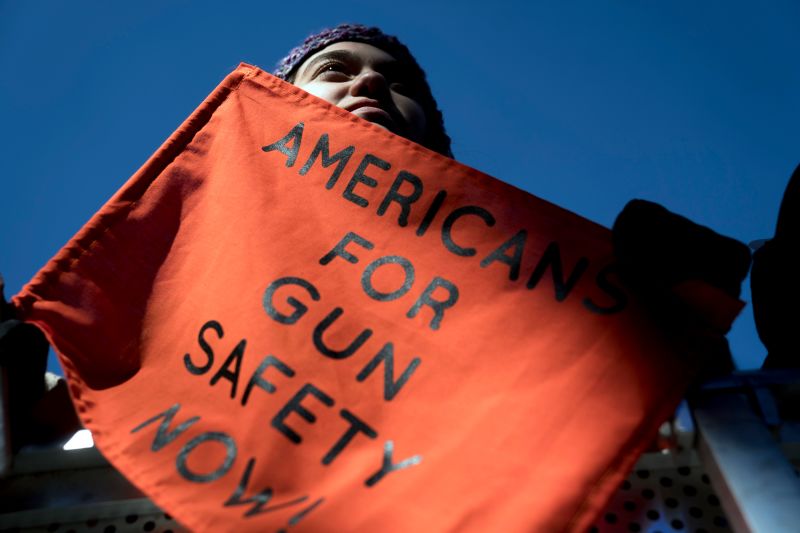
What are red flag laws? These laws, often called Extreme Risk Protection Orders (ERPOs), are designed to temporarily remove firearms from individuals deemed a danger to themselves or others. They’ve become a focal point in the ongoing debate about gun violence prevention, with proponents arguing they offer a crucial safety net and critics expressing concerns about due process and potential abuse.
Red flag laws aim to address situations where individuals exhibit warning signs of potential harm, such as threats of violence, mental health crises, or a history of domestic violence. They provide a legal framework for law enforcement or family members to petition a court to temporarily restrict an individual’s access to firearms, pending a hearing to determine if the risk is legitimate.
Definition and Purpose of Red Flag Laws

Red flag laws, also known as extreme risk protection orders (ERPOs), are a type of gun control legislation that allows law enforcement or family members to temporarily remove firearms from individuals deemed to be a danger to themselves or others. These laws aim to prevent gun violence by intervening before a tragedy occurs.
Red flag laws are rooted in the idea that individuals experiencing a mental health crisis or exhibiting concerning behavior may pose a risk to themselves or others. They provide a legal mechanism to temporarily restrict access to firearms, preventing potential harm until the individual’s situation can be assessed and addressed.
Common Provisions of Red Flag Laws
Red flag laws typically include provisions that Artikel the process for obtaining an ERPO, the criteria for determining a risk, and the duration of the order. Common elements of these laws include:
- Petition for an ERPO: A petition for an ERPO can be filed by a family member, law enforcement officer, or other designated individuals. The petition must provide evidence of the individual’s risk to themselves or others, such as threats of violence, self-harm, or a history of mental health issues.
- Court Hearing: Once a petition is filed, a court hearing is held to determine whether there is probable cause to believe the individual poses a significant risk. The individual subject to the ERPO has the right to legal representation and an opportunity to present evidence in their defense.
- Temporary Restraining Order: If the court finds probable cause, a temporary restraining order can be issued, prohibiting the individual from possessing firearms until a full hearing is conducted. The order typically remains in effect for a specified period, such as 14 days, to allow time for further investigation and a more thorough assessment.
- Full Hearing: A full hearing is conducted to determine whether the individual poses a significant risk and whether an ERPO should be issued. During this hearing, both sides present evidence, and the court makes a final decision.
- Duration of ERPO: If the court issues an ERPO, it typically remains in effect for a specified period, such as one year, and can be renewed if the individual continues to pose a risk. The individual may be able to petition the court to lift the ERPO once they demonstrate they are no longer a danger to themselves or others.
- Firearm Seizure: An ERPO typically requires the individual to surrender any firearms they possess to law enforcement or a designated custodian. The firearms are stored securely until the ERPO expires or is lifted.
How Red Flag Laws Work
Red flag laws, also known as Extreme Risk Protection Orders (ERPOs), provide a legal mechanism for temporarily removing firearms from individuals deemed to pose a significant risk of harm to themselves or others. These laws typically involve a court-ordered process, with specific procedures for initiating, reviewing, and enforcing the order.
Initiating a Red Flag Order
To initiate a red flag order, a petition must be filed with a court by a designated party. This party may vary depending on the specific law, but often includes family members, law enforcement officers, or mental health professionals. The petition must provide evidence to support the claim that the individual poses a significant risk of harm. This evidence may include:
- Statements from the individual expressing intent to harm themselves or others.
- Past incidents of violence or threats of violence.
- Mental health diagnoses or treatment records indicating a risk of harm.
- Social media posts or other online activity suggesting a risk of harm.
- Observations by law enforcement officers or mental health professionals.
Legal Procedures for Obtaining a Red Flag Order
Once a petition is filed, the court will review the evidence and determine whether probable cause exists to believe that the individual poses a significant risk of harm. If probable cause is found, the court may issue a temporary restraining order, prohibiting the individual from possessing firearms for a specified period.
During this period, a full hearing is scheduled, where the individual subject to the order has the opportunity to present their side of the story and challenge the evidence presented against them. At the hearing, the court will consider all evidence presented and determine whether to issue a full red flag order.
Rights of the Individual Subject to a Red Flag Order
Individuals subject to a red flag order have certain rights, including due process protections and the right to appeal the court’s decision. These rights may vary depending on the specific law, but generally include:
- Notice of the petition and hearing.
- The right to legal representation.
- The right to present evidence and cross-examine witnesses.
- The right to appeal the court’s decision.
Arguments for and Against Red Flag Laws: What Are Red Flag Laws

Red flag laws, also known as extreme risk protection orders (ERPOs), are a relatively new type of gun control legislation that allows law enforcement or family members to temporarily remove firearms from individuals deemed to be a danger to themselves or others. These laws have sparked heated debate, with proponents arguing that they are essential for preventing gun violence and opponents raising concerns about due process rights and potential for abuse.
Arguments in Favor of Red Flag Laws, What are red flag laws
Proponents of red flag laws argue that they are a necessary tool to prevent gun violence and protect public safety. They point to the fact that many mass shootings and other gun-related tragedies are committed by individuals who have shown warning signs of mental health issues or violent tendencies. Red flag laws, they argue, provide a mechanism to intervene in these situations before violence occurs.
- Prevent Gun Violence: Red flag laws allow for the temporary removal of firearms from individuals who are deemed to be a danger to themselves or others. This can help to prevent gun violence, particularly in cases where individuals are experiencing mental health crises or have made threats of violence. A study by the RAND Corporation found that red flag laws could potentially reduce gun homicides by 7% to 14%.
- Protect Public Safety: Red flag laws can help to protect the public from individuals who are at risk of committing gun violence. They provide a legal framework for law enforcement and family members to intervene in situations where individuals are exhibiting dangerous behavior. For instance, a study by the Johns Hopkins Center for Gun Policy and Research found that red flag laws could potentially prevent an estimated 50 to 100 gun homicides per year.
- Reduce Suicides: Red flag laws can also be effective in reducing suicides. Many suicides are committed with firearms, and red flag laws can help to prevent these tragedies by temporarily removing firearms from individuals who are at risk of suicide. A study by the Harvard Injury Control Research Center found that red flag laws could potentially reduce firearm suicides by 10% to 20%.
Arguments Against Red Flag Laws
Opponents of red flag laws argue that they are an infringement on Second Amendment rights and raise serious due process concerns. They worry that these laws could be abused by law enforcement or family members, leading to the wrongful confiscation of firearms from law-abiding citizens.
- Due Process Concerns: Critics argue that red flag laws violate due process rights by allowing for the temporary confiscation of firearms without a full and fair hearing. They contend that these laws could be used to target individuals based on their political beliefs or other factors unrelated to their potential for violence.
- Privacy Violations: Opponents argue that red flag laws could lead to privacy violations. For example, they express concern that personal information, such as mental health records, could be used against individuals in red flag proceedings.
- Potential for Abuse: Critics argue that red flag laws could be abused by law enforcement or family members. They worry that these laws could be used to target individuals based on personal vendettas or other motives unrelated to public safety.
- Impact on Gun Ownership Rights: Opponents argue that red flag laws represent an erosion of Second Amendment rights. They believe that these laws are a slippery slope towards more restrictive gun control measures and could ultimately lead to the confiscation of firearms from law-abiding citizens.
End of Discussion

Red flag laws represent a complex and evolving legal landscape, raising crucial questions about balancing public safety with individual rights. While proponents see them as a valuable tool for preventing tragedies, opponents argue for stricter due process safeguards and worry about potential misuse. As the debate continues, understanding the intricacies of these laws and their impact on both gun violence and individual liberties is essential.
Popular Questions
Are red flag laws effective in preventing gun violence?
Research on the effectiveness of red flag laws is still emerging, and there is no definitive consensus. Some studies suggest they may be effective in reducing gun violence, while others show mixed results. More research is needed to fully understand their impact.
How do red flag laws affect gun ownership rights?
Red flag laws aim to temporarily restrict access to firearms in specific situations where there is a demonstrable risk of harm. They do not generally seek to permanently revoke gun ownership rights.
What are the potential downsides of red flag laws?
Critics of red flag laws argue that they can be misused, potentially leading to wrongful restrictions on gun ownership. They also raise concerns about due process rights and the potential for abuse by law enforcement or family members.




